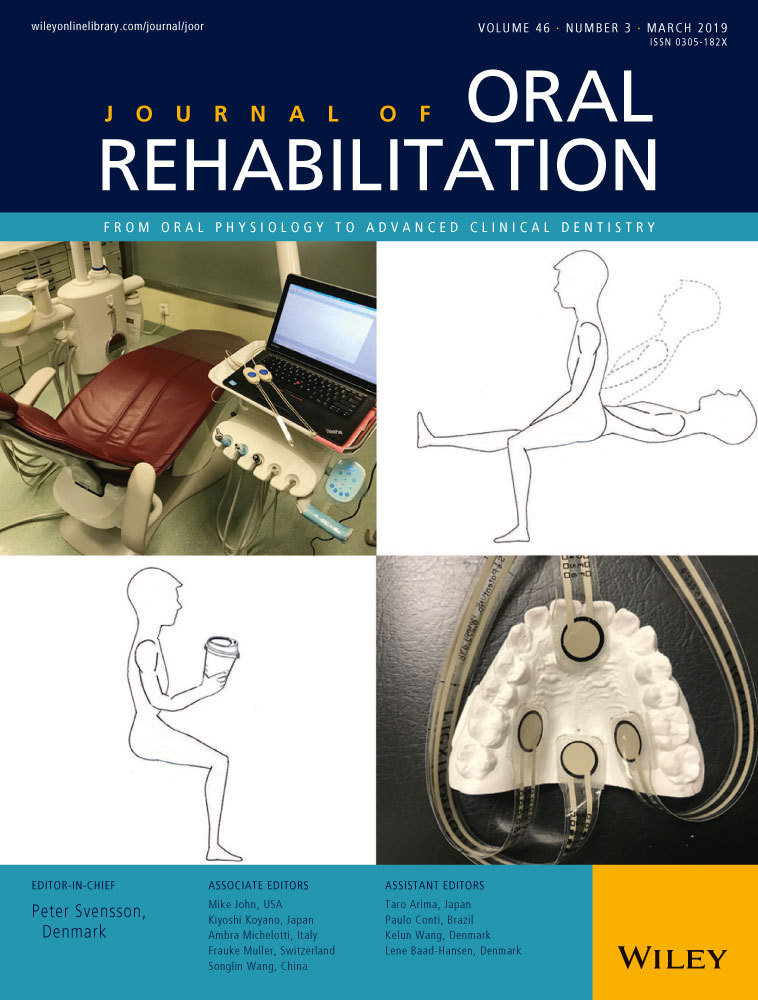Changes in masticatory performance of edentulous patients treated with single-implant mandibular overdentures and conventional complete dentures
Summary
Objectives
The aim of this study was to test the effect of a single-implant mandibular overdenture (SIMO), compared with conventional complete denture (CD), on masticatory performance measured by the mixing ability of a two-coloured chewing gum.
Methods
A sample of edentulous subjects was randomly assigned to the SIMO (n = 15) and CD (n = 19) groups. Patients in both groups received a set of new complete dentures, and the SIMO group received a single implant in the symphyseal region of the mandible (Straumann® Standard Plus SLActive®) and an eliptical matrix and ball attachment for denture retention. Masticatory tests were performed using a two-colour chewing gum (Vivident Fruitswing, Perfetti van Melle, Turkey) for 20 and 50 chewing cycles. Colour-mixing ability was assessed by electronic colourimetric analysis (ViewGum©, Dhal Software, Greece), expressed by the variance of hue. Tests were performed at baseline and at the 6- and 12-month follow-ups. Multilevel linear regression was used to model the changes in masticatory performance.
Results
Groups were similar at baseline for 20 and 50 cycles (P > 0.05). A significant linear effect was observed on time points for 20 and 50 cycles (P < 0.001). No difference was observed between treatment groups factor (P > 0.05). However, the way masticatory performance varied according to time points differed in the CD and SIMO groups for 20 cycles (P = 0.048).
Conclusion
Masticatory performance improved significantly after 12 months, irrespective to the insertion of a single implant to retain a mandibular overdenture. Moreover, results suggest that SIMO treatment may perform better than CD in the shorter follow-up period.
CONFLICT OF INTEREST
None declared.




